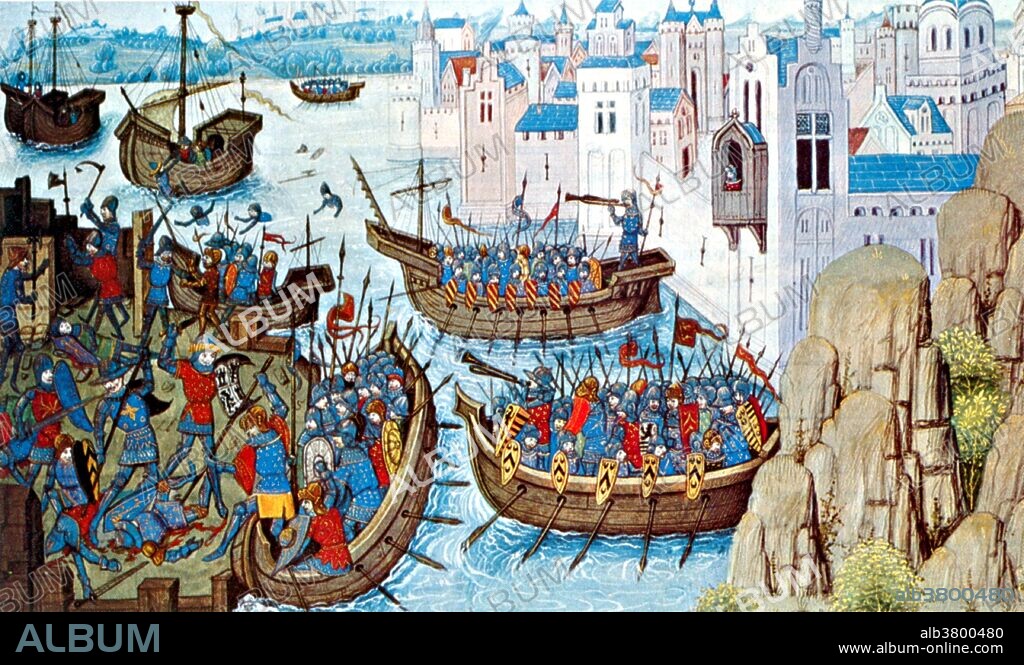alb3800480
Alexander the Great, Siege of Tyre, 332 BC

|
Zu einem anderen Lightbox hinzufügen |
|
Zu einem anderen Lightbox hinzufügen |



Haben Sie bereits ein Konto? Anmelden
Sie haben kein Konto? Registrieren
Dieses Bild kaufen.
Nutzung auswählen:

Titel:
Alexander the Great, Siege of Tyre, 332 BC
Untertitel:
Siehe automatische Übersetzung
The Siege of Tyre was orchestrated by Alexander the Great in 332 BC during his campaigns against the Persians. The Macedonian army was unable to capture the city, which was a strategic coastal base on the Mediterranean Sea, through conventional means because it was on an island and had walls right up to the sea. Alexander responded to this problem by first blockading and besieging Tyre for seven months, and then by building a causeway that allowed him to breach the fortifications. It is said that Alexander was so enraged at the Tyrians' defense and the loss of his men that he destroyed half the city. According to Arrian, 8,000 Tyrian civilians were massacred after the city fell. Alexander granted pardon to all who had sought sanctuary (safety in the temple), including Azemilcus and his family, as well as many nobles. 30,000 residents and foreigners, mainly women and children, were sold into slavery.
Persönlichkeiten:
Bildnachweis:
Album / NYPL/Science Source
Freigaben (Releases):
Bildgröße:
4800 x 2867 px | 39.4 MB
Druckgröße:
40.6 x 24.3 cm | 16.0 x 9.6 in (300 dpi)
Schlüsselwörter:
4. JAHRHUNDERT V. CHR. • 4. JAHRHUNDERT VOR CHRISTUS • 4. JH. V. U. Z. • BERÜHMT • BERÜHMTE PERSÖNLICHKEIT • EREIGNIS • EROBERER • FELDHERR • FEUER, KRIEG • ILLUSTRATION • ILLUSTRATIONS • KONQUISTADOR • KRIEG • MACEDONIAN • MANN • MITTELMEER • NOTABEL • PERSON • PERSöNLICHKEITEN • PERSÖNLICHKEITEN • PROMINENZ
 Pinterest
Pinterest Twitter
Twitter Facebook
Facebook Link kopieren
Link kopieren Email
Email
